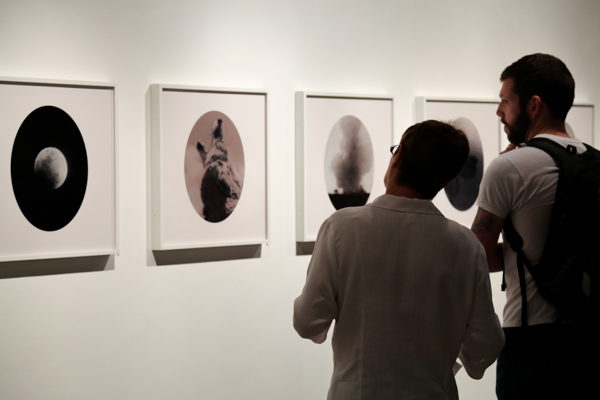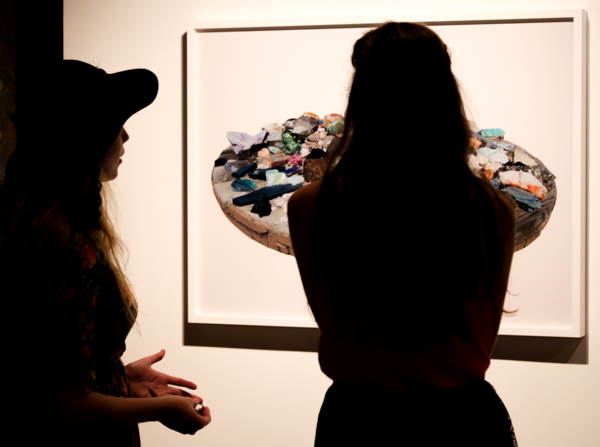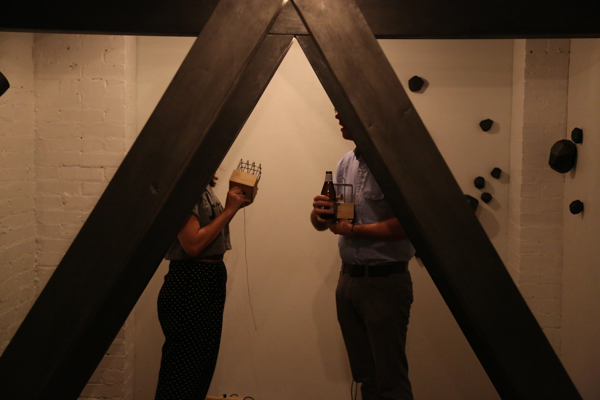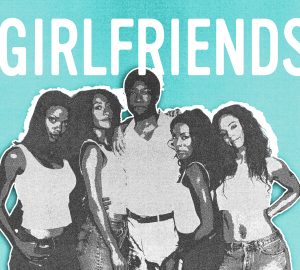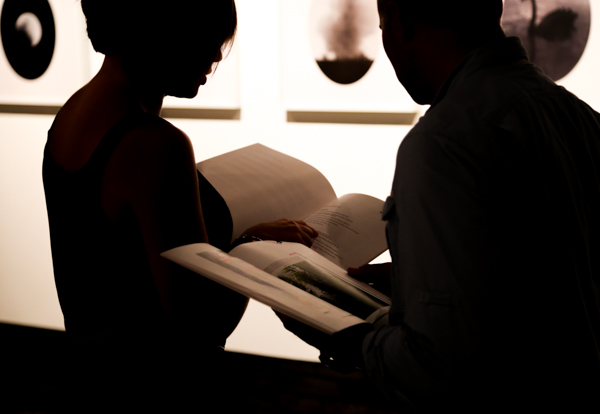
The work of Wendy Given has an undeniable connection to nature and ritual. Her exhibition “Claw Shine Gloam & Vesper,” presently on display at Whitespace, treated patrons to works whose compositions, though beautifully and carefully composed, conveyed a subtle feeling of Wicca. This undertone is less about stereotypical witchcraft and more about an organic view of life, earth and the cosmos.
There is a separate and distinct theme which contributes to the witchcraft response: that of alchemy. The embrace of mythology, ritual and spirituality separates alchemy from modern science and those concepts are precisely what is present in Given’s work. A profile picture of a rabbit on a plain white background instead of its environment next to a mushroom on an equally plain black background. They comes across equal parts clinical and mythological: it not only appears to be a scientific study, but also, ingredients to a potion.
Though she grew up mostly in Athens and Atlanta, Given now lives with her husband, Matt Blum, in Portland, Ore. The scenic environment of the Pacific Northwest has a profound impact on her work. Given has expounded on this often in her interviews most recently in a May 5 interview with Don/Dean:
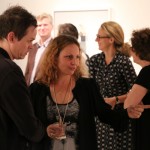
“Nature, in my work, is a foundation of power, irrefutable and mystifying, both intelligible and arcane. I think animals, rocks, and plants hold keys to the known, the unknown and the essential. They are the true ancients and hold innate unspoken cues—cues that inform the way I believe that art can ultimately function effectively. It is a yearning to tap into awareness, an unspoken understanding that we are all and always will be (as humans) a very important part of nature. A call to be cognizant, to be present.”
Given, an approachable and personable woman, was happy to discuss her work at the opening and her later artist talk where she reiterated such beliefs.
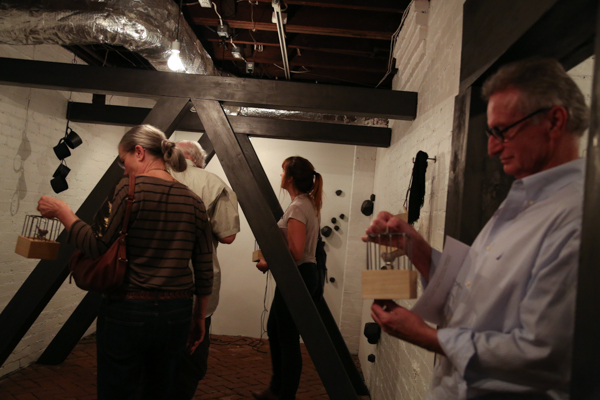
Whitespec, the second gallery space at Whitespace, features an installation by SCAD foundations professor, Martha Whittington. “Used Air” is an experience that evokes the oppressive, trapped feeling of working in a mine. References seem obscure or arbitrary in the beginning — a rubber shovel laying atop a mirror, the bucket and rag hanging on a wall or the “sentinel” each patron carried while inside — but with time, the experience crystallizes. Patrons could move no more than a few paces before needing to duck under beams like those in a mine shaft. The cool air of the Whitespace gallery is absent here, replaced by dead air that does not choke violently but, instead, suffocates slowly. The dim, bar bulb illumination and constant, machine-like hum makes the environment seem more a place for manual labor than art.
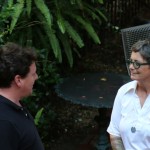
This is just the response that Whittington seeks. Like some of her previous installations, Used Air causes the patron discomfort, both in the physical feeling of being trapped and the mental conflict when considering implication of those feelings as experienced daily by the American laborer. Whittington prefers that people not forget the experience of the laborers ignored by the American public. As people depart for the relief of open air before heading to their cool, air-conditioned homes or a brief respite in the Whitespace gallery, that feeling will linger indeed.
Guests enjoyed interacting with both exhibitions and the artists who created them as well as with one another. As is often the case at Whitespace, the opening was also a social gathering amongst artists and the people who appreciate the arts. Both “Claw Shine Gloam & Vesper in Whitespace and Used Air” in Whitespec will run through Oct. 12.
For more information on gallery hours and directions, see the Whitespace website.
